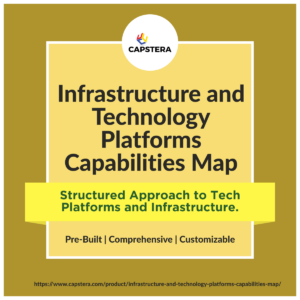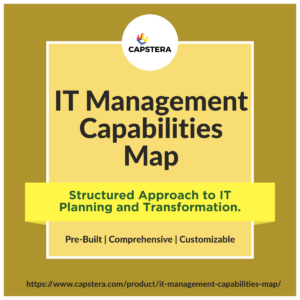
Solution Architecture Demystified
Solution architecture is the cornerstone of most business strategies and is the critical link that merges technology with business requirements. It provides the framework needed to design, deploy, and manage solutions that address specific business needs and goals.
Defining Solution Architecture
Solution architecture refers to the practice of designing, describing, and managing solutions to specific business problems. In essence, it serves as the blueprint of a system, capturing its functional and non-functional requirements and detailing the elements and interactions necessary to achieve the desired outcomes. This includes the software and hardware components, the data that flows between them, and the interface that allows them to interact.
In this context, a solution doesn’t merely imply software or a technical product; it encapsulates the broader perspective of meeting business objectives through the appropriate use of technology. Thus, solution architecture extends beyond the realm of IT and enters the strategic business domain, often setting the stage for enterprise-wide transformation.
Importance and Role of a Solution Architect
The role of a solution architect is pivotal to aligning business needs with technology, bridging the gap between complex business problems and solutions that cater to those challenges. They provide a crucial interface between enterprise strategy and technical execution.
Solution architects play various roles, including strategist, overseer, coordinator, and technical advisor. They ensure that the solution matches the business requirements and technology capabilities and adheres to the necessary technical standards and policies. Solution architects guide teams in implementing the solution, monitor its effectiveness, and make necessary adjustments to enhance its performance.
They collaborate with multiple stakeholders – from C-suite executives to technical teams – to understand their perspectives, constraints, and objectives. Their comprehensive oversight makes them indispensable in managing project scope, risk assessment, and resource allocation.
The State of Solution Architecture Today
In today’s technology-driven business environment, solution architecture holds a paramount position. The rise of digital transformation, cloud technologies, artificial intelligence, and data analytics necessitate solutions that can handle these complex, interwoven technologies while delivering on business objectives.
Businesses increasingly recognize the value of robust solution architecture to navigate this dynamic landscape. It is no longer seen as just an IT activity but an integral part of the strategic decision-making process. In addition to developing technical solutions, solution architects today facilitate innovation, foster organizational change, and drive competitive advantage.
Moreover, the shift towards more agile, flexible business models has seen solution architects adopting a more iterative approach to design and development. They increasingly use methodologies like DevOps and principles like microservices to deliver faster, more efficient solutions.
The future of solution architecture appears promising, with opportunities and challenges in equal measure. As businesses become more technology-reliant, the role of solution architecture and architects will undoubtedly continue to evolve and grow in significance.
Solution Architecture Basics
What is Solution Architecture?
 Solution architecture is a structural design discipline that serves as the bridge between business challenges and technology solutions. It outlines a detailed technology-based response to a given business problem, designing the solution to meet both functional and non-functional requirements. It combines business, information, and technology architecture elements, weaving them into a coherent, manageable solution that aligns with the business’s strategic goals.
Solution architecture is a structural design discipline that serves as the bridge between business challenges and technology solutions. It outlines a detailed technology-based response to a given business problem, designing the solution to meet both functional and non-functional requirements. It combines business, information, and technology architecture elements, weaving them into a coherent, manageable solution that aligns with the business’s strategic goals.
Solution architecture forms the keystone of every complex IT project and is a decisive factor in the success or failure of these initiatives. It ensures that all aspects of a system—data, systems, and processes—work in harmony, producing the desired outcomes without compromising performance, security, or user experience.
Key Components of Solution Architecture
Solution architecture is a multifaceted discipline, encompassing various components forming a complete, effective solution. Some of these key components include:
- Business Architecture: This reflects the strategic goals and processes of the business. It defines the business context for the solution, including the business strategy, key performance indicators (KPIs), and business processes.
- Information Architecture: This deals with the organization and handling of information within the solution. It outlines how data will be collected, stored, managed, used, and protected.
- Application Architecture: This defines the structure of the software components of the solution, including their roles, interactions, and dependencies.
- Technical or Infrastructure Architecture refers to the hardware, software, and network infrastructure supporting the solution. It details how these components will be configured and how they will interact.
Understanding the Role of a Solution Architect
A solution architect stands at the epicenter of business and technology, playing an instrumental role in shaping the solution that responds to a business problem. They analyze the business’s needs, define the solution’s scope, and guide its implementation and evolution.
Solution architects use their deep understanding of technology and strategic insight to design robust, scalable solutions. They collaborate with stakeholders across the organization—business executives, IT leaders, project managers, and developers—to ensure that the proposed solution aligns with business objectives and IT strategy.
The role of a solution architect also extends to risk assessment, identifying potential challenges, bottlenecks, or risks that could impact the solution’s successful delivery or operation. They then develop mitigation strategies to address these risks, ensuring the solution remains resilient and reliable. Solution architects with closely with business architects and enterprise architects and collaborate with them.
The Impact of Solution Architecture on Business
The influence of solution architecture extends far beyond the confines of the IT department—it shapes the business’s capabilities, competitiveness, and future direction.
A well-designed solution architecture enables a business to leverage technology effectively, enhancing efficiency, productivity, and profitability. It allows for the seamless integration of new technologies, facilitating innovation and keeping the business agile in a rapidly changing technological landscape.
By ensuring alignment between business strategy and technology, solution architecture also helps drive strategic transformation. It enables businesses to respond swiftly to market changes, customer demands, and regulatory requirements, ensuring they remain competitive and resilient.
Moreover, solution architecture plays a critical role in risk management. It identifies potential security, compliance, or performance issues before they become problematic, protecting the business from potential operational disruptions, reputational damage, or financial losses.
Solution architecture is a key business enabler—it transforms strategy into reality, turning technological potential into tangible business value.
The Anatomy of Solution Architecture
The anatomy of solution architecture encompasses various components, each with its unique role and value. It spans business, information, application, and technology architectures, ensuring that the solution aligns with business objectives, manages data effectively, and leverages the right technologies coherently and efficiently.
Business Architecture: Aligning Business Strategy and Processes
At the heart of solution architecture lies business architecture, which focuses on aligning business strategies, defining capabilities, and aligning with operational processes. A business architect maps out the organization’s strategic objectives, identifies the processes required to achieve them, and ensures that the technology solution supports them effectively. Of course, one can consider business architecture to be a separate and equal discipline. While solutions are an agglomeration of systems that power capabilities, business architecture defines and owns the capabilities and value streams.
For instance, if a company aims to improve customer satisfaction, the business architecture might include a new CRM system, a redesigned customer service process, or enhanced data analytics to understand customer behavior better. The goal is to design a solution that improves these aspects of the business, aligning technology investments directly with strategic goals.
Information Architecture: Data Management and Utilization
As businesses increasingly become data-driven, the role of information architecture in solution architecture becomes critical. This aspect of solution architecture ensures that the organization collects, stores, processes, and uses data effectively and safely.
This involves designing data models, database systems, and data flow diagrams, outlining how data should move through the organization. Information architecture also covers aspects like data privacy, security, and compliance with regulations, ensuring that the organization handles its data responsibly and ethically.
A robust information architecture enables businesses to leverage data for strategic decision-making, enhance customer experiences, and gain competitive advantage. For example, with the right information architecture, a business could use data analytics to identify market trends, tailor its offerings to individual customer preferences, or optimize its operations for efficiency and cost savings.
Application Architecture: Software Components and Interactions
Application architecture focuses on the software components of the solution, defining how these components interact to deliver the required functionality. This includes the software applications themselves and the interfaces, data flows, and protocols that allow them to communicate.
In application architecture design, solution architects must consider factors like usability, performance, security, scalability, and maintainability. They must ensure that the software components work together seamlessly, that they can scale to meet demand, and that they can be updated or replaced without disrupting the overall solution.
For instance, an e-commerce solution might include an online shopping platform, a payment gateway, a customer database, and a logistics tracking system. The application architecture would specify how these components interact, handle data, and provide a smooth, secure, and user-friendly shopping experience.
Technology Architecture: Hardware, Software, Network Infrastructure
Technology architecture, often called infrastructure architecture, outlines the hardware, software, and network resources needed to support the solution. It includes the servers, storage systems, network devices, operating systems, and the virtualization, containerization, or cloud platforms that host the applications.
A well-designed technology architecture ensures the solution has the capacity, reliability, and performance to meet its objectives. It also allows for flexibility and scalability, enabling the solution to grow and evolve with the business’s needs.
For example, a streaming service solution would need a robust technology architecture to handle high volumes of traffic, deliver content quickly and reliably, scale to accommodate peak viewing times and protect against cyber threats.
By considering these four critical components, solution architects can ensure that their solutions are comprehensive, coherent, and capable of delivering real business value. They can navigate the complex, interdependent nature of modern IT environments, designing solutions that not only solve today’s problems but also pave the way for future growth and innovation.
The Solution Architecture Process
Solution architecture is not a one-time activity but a continuous process that evolves with the changing business landscape and technological advancements. It involves understanding the business problem, designing, building, and implementing the solution, and continually monitoring and adjusting the solution to maintain its effectiveness and relevance.
Understanding the Business Problem
 The first step in the solution architecture process involves identifying and understanding the business problem that needs to be addressed. This requires a deep understanding of the organization’s strategic goals, business processes, and current technological capabilities.
The first step in the solution architecture process involves identifying and understanding the business problem that needs to be addressed. This requires a deep understanding of the organization’s strategic goals, business processes, and current technological capabilities.
The solution architect collaborates with business stakeholders to gather requirements, understand their expectations, and identify the gaps or challenges in the current state. They also consider external factors such as market trends, customer expectations, and regulatory requirements. This holistic approach ensures that the solution aligns with the business strategy and delivers the desired outcomes.
Designing the Solution
After understanding the business problem, the solution architect translates these requirements into a comprehensive solution design. They detail the architecture of the solution, specifying the components it will comprise, such as software applications, data systems, and infrastructure elements.
The solution design will also outline how these components interact, including data flows, interfaces, and protocols. It will specify the functional and non-functional requirements that the solution must meet, such as performance, scalability, security, and user experience. This design serves as the blueprint for the solution, guiding its development and implementation.
Building the Solution
With the solution design in place, the solution architect works with the development team to build the solution. They guide the team in selecting the right technologies, setting up the development environment, and coding the applications.
The solution architect plays a vital role in managing the development process, ensuring that the team follows best practices and adheres to the defined architecture. They facilitate communication and collaboration among the team, resolve technical issues, and manage risks that could impact the solution’s delivery.
Implementing the Solution
Once the solution is built, it is ready to be implemented in the organization’s environment. This involves installing and configuring the solution, integrating it with existing systems, and testing it to ensure it works as expected.
The solution architect coordinates this process, managing dependencies, resolving integration issues, and overseeing the testing process. They work with IT operations to ensure the solution is properly deployed and with end-users to ensure they understand how to use the solution effectively.
Monitoring and Adjusting the Solution
After the solution is implemented, the solution architect continues to monitor its performance and usage. They collect and analyze data on the solution’s effectiveness, identifying any issues or opportunities for improvement.
Based on this analysis, the solution architect may adjust the solution, enhancing its features, improving its performance, or resolving any problems that arise. They also consider changes in the business environment or technology landscape, adjusting the solution to maintain its relevance and value.
The solution architecture process is a dynamic, iterative process that ensures the solution continues to deliver value to the organization. By understanding the business problem, designing, building, and implementing the solution, and continually monitoring and adjusting the solution, the solution architect can ensure that the solution continues to align with the business’s strategic goals and delivers the desired outcomes.
Comparisons with Other Architectural Disciplines
Understanding solution architecture requires an appreciation of its relationship to other architectural disciplines. Although each serves a distinct purpose, these disciplines often overlap and complement each other in a typical enterprise setting.
Solution Architecture vs. Enterprise Architecture
Solution architecture focuses on designing solutions to specific business problems, while enterprise architecture oversees the entire organization’s technology landscape.
Enterprise architecture provides a holistic view of an organization’s technology strategy, laying out the roadmap for the alignment of technology initiatives with business goals. It covers the organization’s current state, its desired future state, and the transition strategy to bridge the two.
On the other hand, solution architecture zooms in on the specifics, addressing how to deliver a particular solution that fits into the wider enterprise architecture. It is the execution of the grand plan laid out by the enterprise architecture, focusing on a specific business problem or project.
Solution Architecture vs. Application Architecture
Application architecture is a component of solution architecture. It focuses on designing the structure of software applications, defining how they interact and work together to meet specific requirements.
Solution architecture, however, is broader. It incorporates application architecture, but it also involves understanding business objectives, designing data flows, and deciding on the necessary infrastructure. The solution architect integrates the various architectural domains, including application architecture, to create a cohesive, effective solution to a business problem.
Solution Architecture vs. Technical Architecture
Technical architecture, often referred to as infrastructure architecture, is another subset of solution architecture. It deals with the hardware, software, and network elements that support the solution, focusing on the technological resources necessary for its implementation.
Solution architecture, however, is more comprehensive. It not only includes decisions about the technical infrastructure but also encompasses business strategy, data management, and software applications. A solution architect ensures all these elements work together in harmony to deliver a solution that meets the business’s strategic goals.
How These Architectures Interact and Complement Each Other
These architectural disciplines are not isolated; they interact and complement each other within an organization. Enterprise architecture sets the strategic direction, guiding the organization’s overall technology efforts. It informs solution architecture, which takes this strategic direction and applies it to specific business problems.
Within solution architecture, application, and technical architectures play key roles. The application architecture defines how the software components of the solution will interact, while the technical architecture outlines the infrastructure that will support these software components.
Together, these architectures create a coherent, effective technological environment. They ensure that the organization’s technology efforts are strategic, targeted, and integrated, delivering solutions that align with business objectives and drive value.
Understanding the interplay between these architectural disciplines is critical for effective IT management. They each serve unique but interconnected roles, contributing to the organization’s technological and strategic success.
Essential Tools and Techniques in Solution Architecture
Solution architecture employs various tools and techniques to visualize, design, and implement effective solutions. These tools and techniques help architects model business processes, structure software components, and create clear, concise diagrams. They facilitate the development of modular, scalable, and interoperable solutions that meet business requirements and align with strategic goals.
 Solution Architecture Diagramming Techniques
Solution Architecture Diagramming Techniques
Creating a visual representation of the solution architecture is essential for conveying complex information in an understandable manner. Solution architects employ various diagramming techniques to depict the components of the solution and their interactions. These diagrams help stakeholders understand the structure of the solution, how data flows within it, and how different elements connect.
Techniques such as UML (Unified Modeling Language), ArchiMate, or flowcharts can be used, each serving a different purpose. For instance, UML is excellent for object-oriented modeling, while ArchiMate is designed to provide a comprehensive modeling language that helps to describe and understand the architecture within and across business domains.
Using Business Process Modeling (BPM)
Business Process Modeling is a technique used to map out an organization’s business processes in a clear and comprehensive way. This helps in understanding how the business operates and identifies areas of improvement. The solution architect uses this understanding to design a solution that optimizes these processes and meets the business requirements.
BPM can be facilitated by tools like BPMN (Business Process Model and Notation), which provides a standard for representing business processes in graphical form.
Implementing Service-Oriented Architecture (SOA)
Service-Oriented Architecture (SOA) is a design pattern in which services are provided to other components via a communication protocol over a network. These services are loosely coupled, meaning they interact without depending on each other’s inner workings.
SOA allows for greater flexibility and interoperability between different systems. It also promotes reuse, as several components within the solution can use a single service or even across different solutions. Implementing SOA can lead to more scalable, modular, and manageable solutions.
Employing API-First Design
API-First design is an approach where the application programming interfaces (APIs) are designed before the software that uses them. This ensures that APIs are consistent, high quality, and capable of supporting future requirements.
APIs enable different software components to interact, exchange data, and perform operations. By focusing on APIs from the beginning, solution architects can design solutions that are flexible, modular, and easy to integrate with other systems. This approach also encourages collaboration between teams, as they can agree on the API specifications and work on their respective components simultaneously.
Leveraging Microservices Architecture
Microservices Architecture is a design approach where the application is structured as a collection of loosely coupled services. Each microservice is a small, independent component that performs a specific function and communicates with other microservices via APIs.
This architecture offers numerous benefits for solution architects. It allows for greater modularity, making the solution easier to develop, test, and maintain. It also improves scalability, as each microservice can be scaled independently to meet demand. Furthermore, it supports continuous delivery and deployment, enabling the organization to bring new features and improvements to the market rapidly.
By leveraging these tools and techniques, solution architects can design solutions that are efficient, scalable, and capable of driving business value. These methods enable architects to represent complex solutions in a manner that stakeholders can easily comprehend and interact with, ensuring that the solution aligns with business objectives and delivers the desired outcomes.
Key Deliverables of Solution Architecture
Solution architecture entails the production of several key deliverables that together provide a comprehensive outline of the solution. These documents convey the various aspects of the solution, including its design, non-functional requirements, and implementation strategy. They serve as references for all stakeholders, guiding the solution’s development, deployment, and maintenance.
Solution Architecture Document (SAD)
The Solution Architecture Document (SAD) provides a comprehensive overview of the solution’s architecture. It covers the solution’s objectives, its alignment with business goals, and the architectural decisions made to meet these objectives. This document outlines the various architectural domains of the solution, such as business, data, application, and technology architectures, and their relationships.
The SAD serves as the primary reference for understanding the solution architecture. It provides the necessary context for other deliverables, such as design documents and implementation plans.
High-Level Design (HLD) Document
The High-Level Design (HLD) document outlines the solution’s overall design. It describes the solution’s main components, functions, and interactions. The HLD provides an abstract view of the solution, focusing on its structure rather than the specific details of its implementation.
This document helps stakeholders understand the broad strokes of the solution design. It provides the foundation for the Detailed Design Document, which delves into the finer points of the solution’s implementation.
Detailed Design Document (DDD)
The Detailed Design Document (DDD) provides an in-depth description of the solution’s implementation. It covers the solution’s components in detail, including their configurations, interfaces, and interactions. The DDD also includes the technical specifications for the solution, such as the programming languages, frameworks, and protocols to be used.
The DDD serves as the blueprint for the development team, guiding them in building the solution. It ensures that the team has a clear understanding of what needs to be built and how it should function.
Non-functional Requirements (NFR) Document
The Non-functional Requirements (NFR) document outlines the solution’s non-functional requirements: performance, security, scalability, and reliability. These requirements describe how the solution should perform rather than what it should do.
The NFR document ensures that the solution meets the necessary standards for quality and performance. It guides the development and testing teams, ensuring they build a solution that delivers the desired features and provides a positive user experience.
Implementation Plan and Strategy Document
The Implementation Plan and Strategy document provides a roadmap for deploying the solution. It outlines the steps to be followed, the resources required, and the timeline for the implementation. This document also includes strategies for managing risks, handling potential issues, and ensuring a smooth transition to the new solution.
The Implementation Plan and Strategy document serves as the guide for the implementation team. It ensures that the solution is deployed effectively and efficiently, minimizing disruption and maximizing value for the organization.
The key deliverables of solution architecture provide a comprehensive view of the solution, from its high-level design to its detailed implementation strategy. By producing these documents, solution architects ensure that all stakeholders have a clear, shared understanding of the solution, facilitating effective collaboration and successful delivery.
Skills Required for Effective Solution Architecture
 A successful solution architect should have a robust set of skills that span across various domains. They are technical experts, business strategists, communicators, problem solvers, and leaders. These diverse capabilities enable them to design and implement solutions that drive value for the organization.
A successful solution architect should have a robust set of skills that span across various domains. They are technical experts, business strategists, communicators, problem solvers, and leaders. These diverse capabilities enable them to design and implement solutions that drive value for the organization.
Technical Competencies
As the architects of technology solutions, solution architects need to possess strong technical skills. They should have a deep understanding of software development, data management, network infrastructure, and information security, among other areas.
Moreover, they need to stay updated with the latest technologies and trends. The world of technology is dynamic, with new innovations continually emerging. Solution architects must be quick to adapt and learn to harness these innovations to create effective, modern solutions.
Business Understanding
Solution architects serve as the bridge between the business and technical teams. To play this role effectively, they need a solid understanding of the business. They should grasp the organization’s strategy, goals, processes, and challenges.
This business understanding enables solution architects to design solutions that align with the organization’s objectives. It also helps them communicate effectively with business stakeholders, ensuring that the solution meets their needs and expectations.
Communication Skills
Communication is a crucial skill for solution architects. They need to articulate complex technical concepts in a way that is clear and understandable to non-technical stakeholders. They also need to listen and understand the needs and concerns of these stakeholders to ensure that the solution meets their requirements.
Effective communication enables collaboration and consensus-building. By communicating clearly and effectively, solution architects can facilitate smooth collaboration between different teams and ensure that all stakeholders are on the same page.
Problem-Solving Ability
Solution architecture involves solving complex business problems with technology. As such, problem-solving is a critical skill for solution architects. They need to analyze problems, identify their root causes, and devise effective solutions.
Problem-solving requires creativity and analytical thinking. Solution architects need to think outside the box to come up with innovative solutions. They also need to use their analytical skills to evaluate the feasibility and effectiveness of these solutions.
Leadership and Project Management Skills
Solution architects often lead project teams and oversee the implementation of solutions. Therefore, they need strong leadership and project management skills.
As leaders, they need to inspire and motivate their teams, fostering a positive and productive work environment. Project managers need to plan and coordinate activities, manage resources, and mitigate risks to ensure the successful delivery of the solution.
Solution architecture requires a diverse set of skills. It’s not just about technical expertise; it’s also about understanding the business, communicating effectively, solving problems, and leading teams. By honing these skills, solution architects can drive the success of their projects and deliver value to their organizations.
Common Challenges in Solution Architecture and How to Overcome Them
While solution architecture can drive significant value for organizations, it also presents several challenges. These range from technical hurdles to organizational obstacles. By recognizing and addressing these challenges, solution architects can improve the effectiveness of their solutions and the efficiency of their processes.
Integrating with Legacy Systems
Many organizations rely on legacy systems—older technology still in use—to carry out critical business functions. Integrating new solutions with these legacy systems can be complex and risky. However, the right approach can mitigate these risks. Architects can leverage middleware or build custom interfaces to facilitate integration. Where possible, legacy systems may also be incrementally modernized to enhance compatibility.
Keeping Pace with Technology Changes
Technology evolves rapidly, with new trends, tools, and platforms emerging continually. Staying abreast of these changes is challenging but essential. Solution architects can tackle this by dedicating time to learning and experimentation. Regular training, attending industry events, and following reputable tech news sources can also help keep architects updated.
Navigating Organizational Politics
Solution architects often need to manage various stakeholders, each with their own priorities and perspectives. Navigating these dynamics can be challenging. Clear communication, negotiation, and consensus-building skills can help architects manage these complexities. Moreover, focusing on shared goals—like business value and customer satisfaction—can help align differing viewpoints.
Ensuring Security and Compliance
In an era of increasing cyber threats and stringent regulations, ensuring security and compliance is critical but challenging. Solution architects need to consider security and compliance requirements from the start. This includes adopting secure design principles, conducting regular security reviews, and keeping abreast of regulatory changes. Incorporating security and compliance into the fabric of the solution, rather than as an afterthought, is the best way to tackle this challenge.
Managing Scalability and Performance
As organizations grow and demand increases, solutions need to scale without compromising performance. This can be a daunting task. To overcome this challenge, solution architects should design for scalability from the beginning. Techniques such as load balancing, microservices architecture, and elastic computing can help manage scalability and performance effectively.
The path of solution architecture is filled with challenges. But these hurdles can be overcome with a proactive approach, the right skills, and a relentless focus on delivering business value. The reward—solutions that drive business success—makes the effort worthwhile.
Case Studies in Solution Architecture
Solution architecture has diverse applications across industries, enabling businesses to solve complex problems and enhance their operations. This chapter presents four case studies, each illustrating how solution architecture has driven value in different sectors.
Solution Architecture in E-Commerce
In the rapidly growing e-commerce sector, a leading global online retailer faced challenges with its product recommendation engine. The system was unable to scale with the increasing user base, leading to poor performance and unsatisfactory customer experiences.
A solution architect was brought in to address the issue. After analyzing the problem, the architect designed a microservices architecture solution. This design separated the recommendation engine from the rest of the system, enabling it to scale independently based on demand. The result was a drastic system performance and customer satisfaction improvement, leading to increased sales.
Solution Architecture in Financial Services
 A multinational bank sought to modernize its legacy systems to enhance efficiency and improve customer service. However, these systems were complex and deeply embedded in the bank’s operations, making the task daunting.
A multinational bank sought to modernize its legacy systems to enhance efficiency and improve customer service. However, these systems were complex and deeply embedded in the bank’s operations, making the task daunting.
A team of solution architects devised a phased approach. They first encapsulated the legacy systems in APIs, reducing their direct interfaces with other systems. Next, they developed a new, modular banking system, gradually replacing the functionalities of the legacy systems. The successful implementation of this solution significantly improved operational efficiency and enabled the bank to provide more effective and responsive customer service.
Solution Architecture in Healthcare
A large hospital was struggling with disjointed patient data across various systems, impacting the quality of care and patient satisfaction. A solution architect proposed a unified patient data management system using a service-oriented architecture (SOA). The new system centralized patient data, providing healthcare professionals with complete and up-to-date patient information.
Additionally, the architect ensured that the system complied with healthcare regulations for data security and privacy. The implemented solution led to better-informed clinical decisions, improved patient care, and higher satisfaction levels among both patients and healthcare professionals.
Solution Architecture in Manufacturing
A global manufacturing company faced issues with its supply chain management. Inefficiencies in tracking raw materials and finished products were leading to delays and increased costs.
A solution architect developed a solution incorporating Internet of Things (IoT) devices for real-time tracking and a cloud-based system for data management. The system gave the company real-time visibility into its supply chain, enabling it to promptly identify and address inefficiencies. The solution led to significant cost savings and improved the company’s ability to meet delivery deadlines.
These case studies demonstrate the potential of solution architecture to transform businesses across sectors. By understanding and addressing business problems with strategic technology solutions, solution architects can drive significant value for organizations.
Wrapping Up: The Future of Solution Architecture
As the technology landscape continues to evolve, solution architecture stands at the crossroads of significant change and opportunity. This final chapter takes a glimpse into the future of this dynamic field.
The Impact of Emerging Technologies on Solution Architecture
Emerging technologies like artificial intelligence (AI), machine learning (ML), the Internet of Things (IoT), and blockchain are reshaping the possibilities in solution architecture. These technologies can enhance system intelligence, improve data management, boost security, and drive automation, among other benefits. Solution architects need to understand and leverage these technologies to design cutting-edge solutions that deliver unprecedented value to organizations.
The Evolving Role of the Solution Architect
As businesses become more digital, the role of the solution architect is expanding. Solution architects are no longer just the bridge between business and IT; they are becoming strategic partners, guiding businesses through their digital transformation journey. In this evolved role, they need to master not just technology but also digital strategy, change management, and customer experience design.
Solution Architecture in the Digital and Cognitive Era
In the digital and cognitive era, solution architecture has a critical role to play. It can enable businesses to harness the power of digital technologies and cognitive computing, transforming their operations, enhancing their customer experiences, and driving competitive advantage. With their blend of technical and business skills, solution architects are ideally positioned to lead this transformation.
Ten Competencies a Solution Architect Must Inculcate to Succeed
To thrive in this evolving landscape, solution architects should focus on developing the following competencies:
- Understanding emerging technologies: Stay abreast of the latest technologies and their potential applications.
- Digital strategy: Learn to develop strategies that leverage digital technologies to drive business value.
- Change management: Become adept at managing the changes that digital transformations bring, both technological and organizational.
- Customer experience design: Learn to design solutions that deliver excellent customer experiences.
- Agile and DevOps methodologies: Master these methodologies to increase speed and efficiency in solution development and implementation.
- Data management and analytics: Develop skills in managing and analyzing data, a critical resource in the digital era.
- Security and privacy: Understand the evolving security threats and privacy regulations and incorporate security and privacy considerations into solution design.
- Business acumen: Gain a deep understanding of the business to ensure that solutions align with business objectives and deliver value.
- Leadership: Hone leadership skills to guide teams and drive collaboration.
- Lifelong learning: Cultivate a mindset of continuous learning to keep up with the rapidly evolving technology landscape.
The future of solution architecture is bright and promising. It offers the opportunity to drive significant value and transformative change in organizations. By embracing this future, solution architects can play a pivotal role in shaping the digital and cognitive era.



